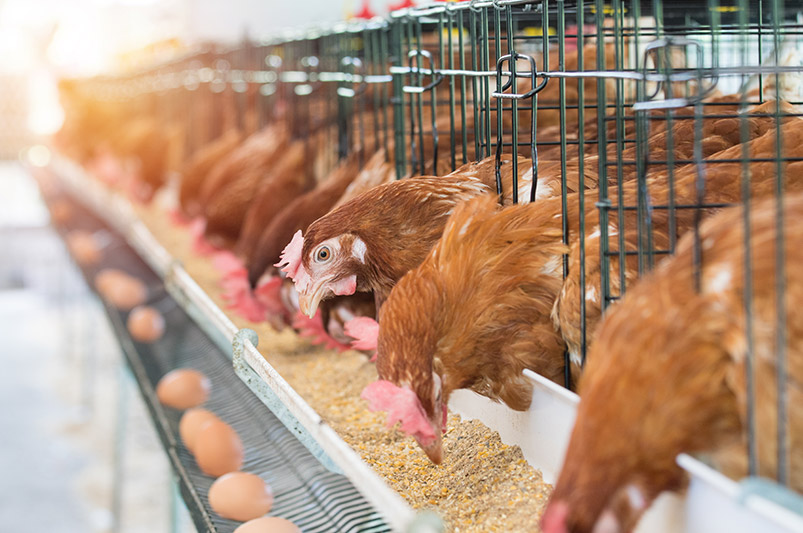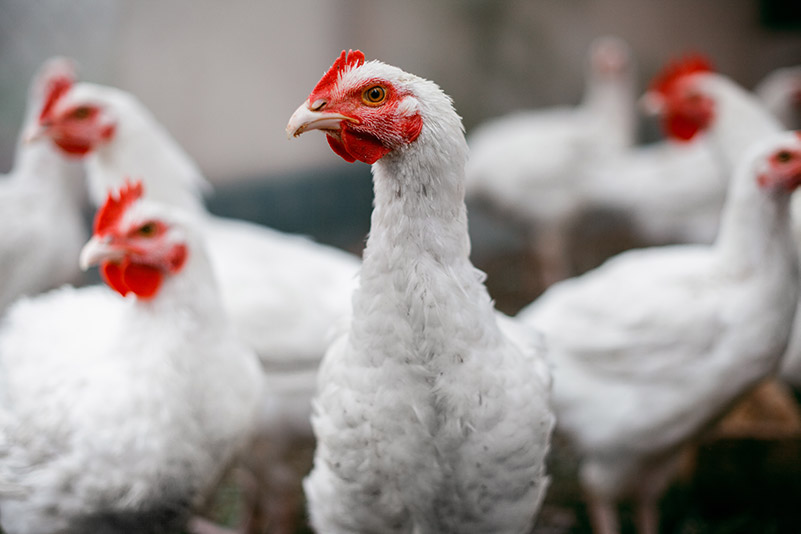Section 2 | Prevention Strategies for Necrotic Enteritis
Industry
Page 13 /
Gut Health
The digestive system of poultry is home to a diverse variety of billions of bacteria that are vital to bird health1. Collectively, they:
- Foster nutrient uptake
- Detoxify harmful compounds
- Regulate the immune system
- Produce compounds that inhibit growth and kill harmful bacteria
- Form a competitive environment that makes it difficult for Clostridium bacteria to cause disease1
We’re in our infancy in fully understanding how this complex environment functions, but there are products that can be fed to restore and optimize a healthy gut microbiota.
Competitive Exclusion
The concept of competitive exclusion (CE) revolves around the provision of poultry-adapted healthy bacteria to the digestive tract of birds. These “good” bacteria create competition for nutrients with “bad” bacteria (like Salmonella and C.perfringens)2. Part of the benefit of feeding probiotics is thought to be through CE. These bugs are best-able to survive in the gut of birds and out-compete potential disease-causing bugs for vital resources to survive.
Probiotics
Probiotics are products containing live bacteria or yeast that “beneficially affect the host by improving the intestinal microbial balance”2. Probiotic bacteria can out-compete harmful bacteria in the gut, stimulate the bird’s immune system, and promote optimal metabolism in the animal. Some of these effects are seen due to the production of antibacterial proteins, toxin inhibitors, and other antibacterial compounds.
There has been intense research into finding the right species, concentrations, and combinations of “good” bacteria that have the highest efficacy in preventing NE in poultry. The table below, adapted from an excellent review article2 provides an overview of bacteria that have anti-C. perfringens activity.
To determine which products are available for use in Canada, and which might be appropriate for your flock, speak to your veterinarian.
Table: Outline of probiotic strains with anti-C. perfringens activity, both in the lab and in live poultry
| Strain | Anti-C.perfringens activity in lab | Anti-C.perfringens activity in poultry |
| Bacillus | ||
| B. cereus 8A | + | ? |
| B. licheniformis | + | + |
| B. pumilus | + | + |
| B. subtilis | + | + |
| Enterococci | ||
| E. faecium | + | + |
| E. faecalis | + | + |
| E. durans | + | ? |
| Bifidobacteria | ||
| B. animalis ssp. lactis | + | ? |
| B. infantis | + | ? |
| B. thermoacidophilum | + | ? |
| Lactobacilli | ||
| Lactobacillus sp. | + | + |
| L. acidophilus | – | + |
| L. amylovorus | + | ? |
| L. animalis | + | + |
| L. fermentum | + | + |
| L. johnsonii | – | + |
| L. mucosae | + | ? |
| L. plantarum | + | ? |
| L. reuteri | + | ? |
| L. salivarius | + | ? |
Table outlines bacterial strains that have anti-C. perfringens activity, identified by recent research
+ = observed anti-C. perfringens activity
? = not tested in poultry
– = anti-C. perfringens activity not observed. Adapted from previous review article2
References
- Grond K, Sandercock BK, Jumpponen A, Zeglin LH. The avian gut microbiota: community, physiology and function in wild birds. J. Avian Biol. 2018;49(11):1–19
- Caly DL, D’Inca R, Auclair E, Drider D. Alternatives to antibiotics to prevent necrotic enteritis in broiler chickens: A microbiologist’s perspective. Front Microbiol. 2015;6(DEC):1–12.


